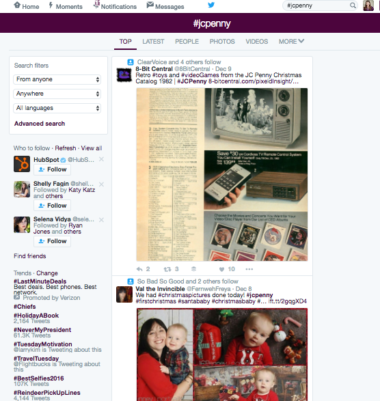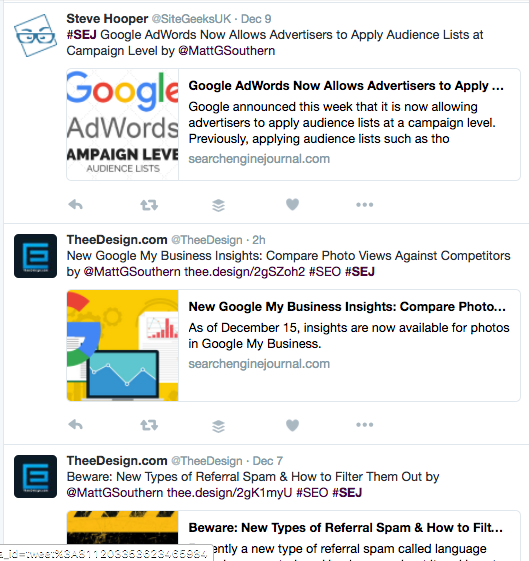Everyone worth their social media salt knows to regularly monitor for brand mentions, but there is a small corner of social media that many people aren’t checking at all: common misspellings, abbreviations, and misused hashtags. Believe or it not, a fairly healthy subset of your customers are likely not spelling your company’s official name, its products, or even its tagline correctly. It’s up to us as social media marketers to track these mistakes and make the best possible use of them that we can.
Below are some of the things that definitely need to be added to your regularly social media monitoring. This can help you better serve your customers and possible even grow your market share amongst your competitors’ customers.
Brand and Product Name Misspellings
This is the single biggest missed opportunity in your social media efforts. There are so many occurrences of misspellings in social media, especially when it comes to unique brand and product names. In almost all cases, the person misspelling a proper name has no idea they are doing it, leading to extreme frustration and anger when they don’t receive a response back from the company.
Or, on the flip side, they excitedly mention something great about the company: a helpful employee, an amazing product, or a clean store. These are also opportunities to build higher customer loyalty and engagement by sincerely thanking them for their comments.
Let’s take the US-based department store JCPenney as an example. This is its proper name, but many people often misspell it as JC Penney’s, JC Penney, JCPenny, or maybe even JCPennie or JC Pennie’s. JCPenney’s social media team should be monitoring all misspelling variations they can think of on a regular basis, either as a saved search on a tool like Hootsuite or in a Twitter search.
In addition to just the name itself, also search for the incorrect variations as hashtags or @ mentions. For instance, people likely continuously tag @jcpenny in posts, when it’s really @jcpenney:
After an hour of being on hold with @jcpenny I was hung up on. Extremely displeased customer
— Jevon Daniel (@bracefacebeauti) December 17, 2016
JC Penney’s should think about registering the most popular variations of the misspellings of their brand name or products and then using the bio area to direct any misguided visitors to the correct profile and website.
An amazing example of this is the British department store John Lewis. Every year during the holidays, hundreds to thousands of customers of the actual department store tweet at the username @JohnLewis, which is actually the account of a normal American man of the same name. He diligently takes the time to respond to these mistakes (bless him).
I want to thank everyone for the hundreds of tweets warning me that I was about to get hundreds of tweets. They're here. @johnlewisretail
— John Lewis (@johnlewis) November 10, 2016
This year, the department store thanked him by sending a huge gift box filled with some holiday cheer. This was a perfect way to capitalize on common social media user typos and mistakes. Every year, I look forward to reading American John Lewis’ tweets about his holiday baubles and daily sparkles.
Using Hashtags Instead of @
Another thing I frequently see social media users doing is trying to mention brands as hashtags instead of @ mentioning them. For instance, we occasionally see #SearchEngineJournal in social posts about our content. Besides monitoring the hashtags for the correct spelling of your company, think about other things that may be a hashtag instead of a proper account mention.
For instance, the Denver Broncos’ monitoring team monitors the hashtag #Broncos. You can also search by geographic area when doing a name or hashtag search, so narrowing down the location to Denver, Colorado, will likely lead even more accurate results, especially if not all general mentions are about the NFL team.
Abbreviations and Sayings
If you and your community commonly abbreviates your company name, be sure to add these variations to your monitoring list as well. For instance, we monitor the #SEJ hashtag regularly to catch any content we may have missed.
Likewise, if your organization uses any unique phrases, sayings, or slogans, be sure to monitor for these as an exact match search (in quotation marks) or as a hashtag and @ mention. This applies even if you don’t use the slogan anymore– it doesn’t mean that your audience isn’t either.
In addition to brand specific sayings and abbreviations, try to search for other slang terms or sayings that are applicable to your industry or service to look for places to engage your target audience.
For instance, the 90s Bar Crawl that stops at multiple locations throughout the United States in the summer should look for 90s-themed terms that users have turned into hashtags and follow them or leave a thoughtful comment. Hashtags that spring to mind are #IceIceBaby, #pogs, #SpiceGirls, or other popular bands, products, or slogans.
Track Competitor Misnomers
Here is where you can come even further ahead of your competitors: monitor their hashtags and common misspellings. Nike should be watching for @adids, #underarmour, or #reeboke. LG should be watching #Samesung or #Nokea (the way that people come up with misspelling things truly has no bounds). If you are monitoring their misspellings or hashtags and they aren’t responding, then that gives you a chance to. Offer unique coupons (with tracking URLs or custom codes to monitor your success) or just answer their question, even if it’s not directly promoting your own product.
When coming up with a list of what to monitor, do your own searches on brainstormed phrases or hashtags first to make sure there are people actually completing these types of searches. Then, create the list as mentioned above in Hootsuite or another tracking tool (like BuzzSumo or Google Alerts) and get search results sent to you immediately or on a regular basis via email.
This is a unique opportunity in the world of reputation and social media monitoring. Take advantage of it by brainstorming all the possible options to search and also ask customers and external colleagues how they would butcher your name and products. Think like the mind of your customer and how they would likely use social media to connect with your brand. And if you’re a great speller, suck it up and start going against your very nature. Customer satisfaction may depend on it.
Featured image via Canva, screenshots taken December 2016.







